How should I be conditioning in the off season
The off-season is the perfect time for an athlete to work on the weakest part of his or her game, while maintaining all other skills. It is possible to work on getting faster and stronger year round, as long as proper periodization and recovery methods are used. One must understand that there is a difference between getting faster versus building endurance. Being smart and efficient in one’s planning is essential to getting the most out of off-season training.
How to Get Faster
Understanding intensity and volume will help create the proper work-to-rest ratio to make one faster. When looking at intensity, the faster one runs, the higher the intensity. Performing sprints at 95% intensity puts a large tax on an athlete’s central nervous system and will require proper recovery between 2-5 minutes. If one performs sprints without enough rest, it will only improve the ability to repeat at a lower speed. When considering volume, look at the number and distance of repetitions being done. In order to become faster, one must work at a high intensity with a lower volume. If volume is too high, intensity will be compromised. Start with 30 meters sprints and be consistent with the time it takes to complete each sprint. If there is a difference in the time, one must give their body a longer rest period between sprints. As one continues to practice the skill they are trying to better, they add volume as they progress.
How to Build Endurance and Stamina
When one builds endurance, he or she needs to mirror the movements done in a game, such as: accelerating, decelerating, shuffling, changing direction, and sprinting. These are the general movements that occur on the field, court or ice. The key to building endurance is the ability to fight fatigue and recover quickly during rest periods.
In lacrosse, for example, sprints last around 4-30 seconds with rest periods between 10-60 seconds, depending on each position. A great way to build endurance is with an interval method where there is a work period followed by a rest period. Interval methods increase glycolytic, as well as oxidative enzymatic activities (the breakdown of glucose to pyruvate for release of usable energy), improve acid-base buffering capability (the body’s ability to maintain a constant pH level while new electrolytes are being introduced through the metabolism), and improve lactic capacity; in short, interval methods are awesome for you. An example would be a shuttle run. The athlete starts with a 1:4 work-to-rest ratio (run 15 seconds, rest 60 seconds), working up to a 1:1 work-to-rest ratio. As there is progress, increase the volume by adding additional repetitions. After running, practice proper recovery methods such as hydration, rest, and nutrition.
When to Begin Conditioning
This depends on the level of play and commitment to the sport. Never wait until the week before tryouts to get prepared. When competing at a higher level, it is beneficial to train hard during the off-season. Generally speaking, a 12-week program working on speed, power, strength, agility, and endurance prior to the season will definitely impress coaches come tryout time. The best advice is to create a plan for an off-season program that highlights weaknesses, while maintaining all other threads of the sport. Set specific training goals to help keep development on track. Overall, the time to start conditioning is highly individualized, and the player must be able to assess their skills and evaluate how long it will take to get into shape.
The BIG Picture
Athletes want to make their bodies as efficient as possible during all movements they are required to do. The off-season is a great time to develop adaptations that make this happen. With a proper strength program, one can improve functional movement, add muscle mass, increase power, and prevent possible energy leaks, which all have a great influence on speed, endurance, and injury prevention.
Michael Donoghue, CSCS, FMS, USAW (Head Strength and Conditioning Coach and Director of Performance at Athletic Performance Training). Michael is in charge of designing all the training programs for professional, collegiate, high school, and youth athletes at APT. Michael holds a degree from Springfield College in Applied Exercise Science as well as various certifications. For further information he can be reached at www.aptrainingsystems.com
1 Comments
Leave a Comment
You must be logged in to post a comment.


Great Article, Mike